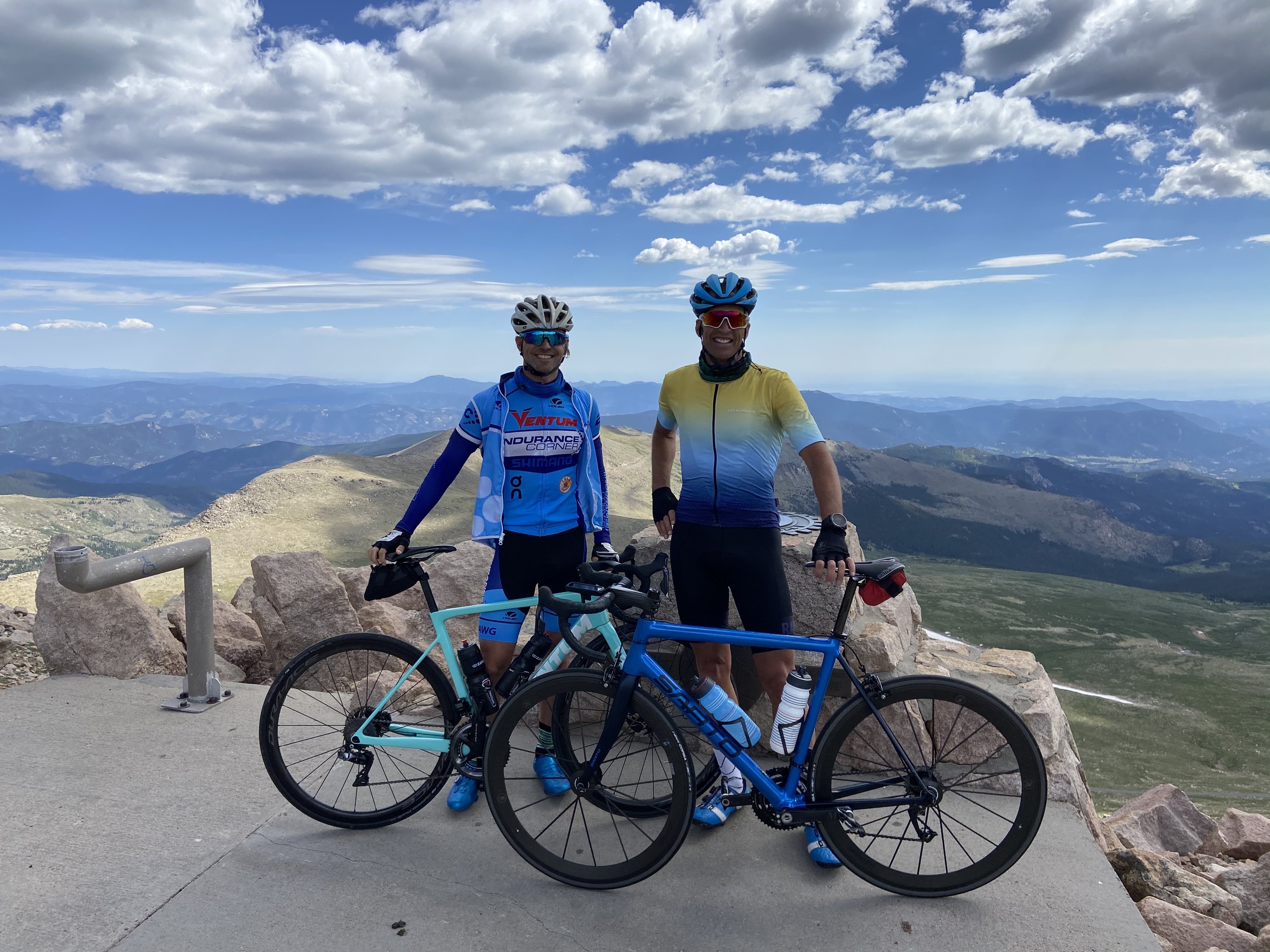FAST vs. HARD
Drew Hall and I at the summit of Mt. Evans.
A number of years ago, I remember Coach Bobby McGee talking about how he did not often hear Kenyan runners describe their training sessions as hard. McGee said the most you might ever hear from them was that the session “was challenging.” This stood in contrast to hearing athletes from other parts of the world that were quick to emphasize how hard their training was. My memory is not clear enough to recall whether this was the moment where I changed my own usage of the word “hard,” but it certainly shaped my thinking going forward.
There are many ways to quantify and define training along with the subsequent zones and intensities that go along with it. In my own world, the five zone system I used consisted of the following subjective descriptions:
Easy
Steady
Moderately Hard
Hard
Very Hard
Now, I don’t disagree with these descriptions. The problem, to me, is what it is we are trying to seek. If an athlete had a session written as 5 x 3 minutes with a goal of doing each rep “hard,” then the athlete is seeking something to feel/be hard. In other words, the sign of an accomplished session is only that it was hard, not that it was productive.
Something that I came to realize is that I didn’t need these sessions to be hard. I needed them to be FAST.
So I ditched the word “hard” and used the following words to describe the intensity of my zones:
Easy
Steady
Strong
Fast
Very Fast
To begin with, I think all these words have a positive feel, at least from zone 3 and up, but more importantly, they don’t have a negatively loaded feeling attached to an output. This is not to say that a session/workout is not, in fact, hard. Instead, it means that going hard is no longer the goal, it’s simply a description in the aftermath. When an athlete sets out to go fast in a session, they may find it to come easily, be a struggle or exist somewhere in between, but the goal of going fast is what is targeted from the outset. If fast is achieved, then the box is checked.
Additionally, when seeking a sensation such as fast, it can be felt almost immediately. As soon as you ramp the pace up on a run, you’ll get the familiar sensation of running fast. The sensation of “hard,” however, is delayed. Using a practical example with the workout I wrote above, if someone runs 5 x 3 minutes holding 6:00/mile pace then each repeat will yield ~800 meters, but it might only begin to feel hard in the back half of the session. In order for it to feel hard on the first rep, the athlete likely needs to overrun the first rep, only to succumb to slowing down in the back half.
Now, I understand that many qualitative sessions aren’t necessarily written with the only parameters being to run/ride/swim/etc. an interval “fast.” Given the ability to use Garmins, power meters, pool clocks, etc. the more intense a workout is, the more likely it will be written with specific power/pace targets. However, I do think that learning to associate sensations along with these targets is incredibly important, particularly when you do the sessions in complicated and varying terrain. I find this to be especially relevant when preparing for triathlon run courses where the run routes are often pieced together with awkward turns, sidewalks, and other rhythm-breaking challenges. By doing some training sessions that are guided by sensation and RPE over mixed terrain, you learn to apply this skill in racing where you can’t necessarily be guided by firm objective pace targets. While I have used running as the primary example here, this has broader implications across all mediums.
I realize this descriptive style may not be for everyone. Some athletes might actually thrive more on the usage of the word “hard” more than fast because it may exhibit feelings of tenacity and grit. That is perfectly understandable. I just felt that when I framed it this way, it helped me realize that improvement in races came from going faster, and not necessarily from going harder.
The Houstonian Pool in Houston, Tx.

